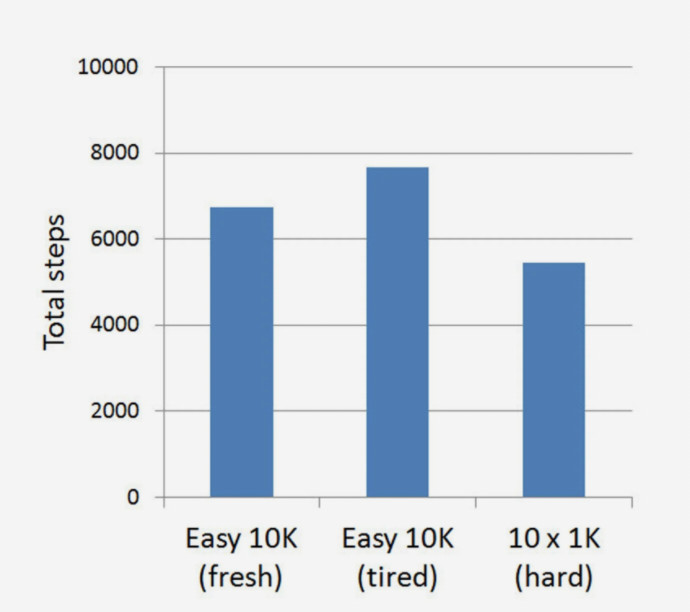Running News Daily
Running News Daily is edited by Bob Anderson. Send your news items to bob@mybestruns.com Advertising opportunities available. Train the Kenyan Way at KATA Kenya and Portugal owned and operated by Bob Anderson. Be sure to catch our movie A Long Run the movie KATA Running Camps and KATA Potato Farms - 31 now open in Kenya! https://kata.ke/
Index to Daily Posts · Sign Up For Updates · Run The World Feed
Stop Counting Your Running Mileage
It’s the one training metric virtually all runners track, but running scientists think we can do better
Even in this brave new world, with wearable technology that tracks and shares our every twitch and palpitation, the fundamental unit of training data for runners is still very old-school: How many miles did you run last week? In fact, as a new opinion piece in the Journal of Orthopaedic & Sports Physical Therapy notes, the rise of GPS watches has only strengthened our obsession with tracking mileage. And that, the article’s authors argue, is a problem—or at least a missed opportunity.

The authors have plenty of cred in the world of running science. Lead author Max Paquette is a biomechanist at the University of Memphis (and the husband, for what it’s worth, of 15:10 5,000-meter runner Lauren Paquette). Chris Napier and Rich Willy are highly respected physical therapists and researchers at the University of British Columbia and the University of Montana. And Trent Stellingwerff is a physiologist and coach who works with the Canadian Olympic team (and the husband of two-time 1,500-meter Olympian Hilary Stellingwerff). They’ve all tracked plenty of mileage totals in their time. But they think it’s time to move on.
The first part of their paper explains why relying on mileage alone to track training is a problem. Their basic point is fairly obvious: the distance you cover often isn’t a good proxy for how much stress you’re putting on your body. An easy 10K trail run is very different from 10 x 1,000 meters all-out on the track in spikes. And, more subtly, an easy 10K run is harder on your body if you’re exhausted from previous training than if you’re fresh.
There are two reasons to care about getting an accurate sense of the training stress you’re incurring. One is that it will determine how tired you are (in the short term) and how much fitter you get (in the long term). Getting the balance between fatigue and fitness right determines how fast you’ll race. The other is that it will determine, or at least strongly influence, your risk of injury.
On the first question, there’s a fairly long history of research into figuring out a better way of quantifying the balance between fitness and fatigue. What you need is something that takes into account how hard you run, not just how far. There are different ways of measuring “hard,” either externally (pace) or internally (heart rate, perceived effort). Either way, if you multiply duration by intensity for each day’s session, you get a measure of “training impulse” that carries a lot more information than mileage alone. When I covered Nike’s Breaking2 project, the scientific team used a method like this to analyze the training of the three runners. (For kicks, they analyzed mine too, and concluded that I needed to train harder, because I wasn’t building up much cumulative fatigue. They were right.)
Cyclists have already taken this information to heart, in part because power meters make it easy to quantify exactly how hard you’re pushing at any given moment. Software like TrainingPeaks can also calculate equivalent “Training Stress Scores” for running, based on pace data. In my circles, no one asks what your training stress was last week, but the idea is definitely out there. You can do a simple, tech-free version yourself by multiplying the duration of your run (in minutes) by the session’s average perceived effort (on a scale of 1 to 10), and totaling the points you accumulate each week. That would give you a better sense of how hard the week was, in a physiological sense, than mileage alone.
Having said all that, it’s the second problem—injury risk—that makes the new paper most interesting. Most studies that have looked for links between training patterns and injuries have used mileage as the sole measure of training load. Some also look at running pace. What’s missing once again is a combination of those two, but in this case it’s trickier to figure out what that combination should be.
The paper includes a fascinating table that compares three different scenarios that each involve 10K of running: an easy run on a soft trail in cushioned shoes when fresh; a similar easy run when tired; and a track session of 10 x 1,000 meters in rigid spikes. The paces represent an elite runner: 6:00 miles for the fresh easy run, just under 7:00 miles for the tired run, and 2:45 per kilometer (4:25/mile pace) for the intervals. For the tired run, the runner’s average cadence drops from 180 to 177, but the total time is greater, meaning that he takes more steps in total. For the track session, cadence jumps to 198, but the time elapsed is way less. Here’s how the total number of steps compares:
If you care about injury risk, this is a big difference! But there are more variables to consider. The faster you run, the harder your foot smacks into the ground: the track session has a peak vertical ground reaction force of 3.3 bodyweights, compared to just 3.1 for the fresh easy run and 2.9 for the tired easy run. That difference adds up with each step. Similarly, the peak Achilles tendon force is 11.5 bodyweights on the track, compared to 10.0 for the fresh run and 9.1 for the tired run.
At this point, it would be cool to give a formula for how you combine these and other variables to give you an estimate of how likely you are to blow your Achilles. Unfortunately, no one knows the answers. There have been some early attempts: a study published a few years ago at the University of California, Davis, had nine college runners wear a hip-mounted accelerometer in order to calculate the cumulative ground reaction forces that they experienced with each stride over a 60-day period. With such a small sample, it’s hard to draw any conclusions—but the three runners who ended up getting injured did, on average, accumulate more ground reaction force per run.
What Paquette and his colleagues are really calling for is more research like the UC Davis study. Wearable tech has advanced so much in recent years that it’s possible to get detailed biomechanical information from ordinary consumer devices. And with further development, these devices may be able to narrow it down and estimate the load on individual parts of the body like shin bones and Achilles tendons. Somewhere in that mountain of data, there should be one or more measures of cumulative training load that beat mileage as a predictor of injury risk.
Will this approach usher in a new era of perfectly predictable training? Probably not. “Even with the best monitoring approaches,” the authors acknowledge, “differences in individual runners’ tissue load capacity will always make injury prediction elusive.” Predicting race performance will be equally challenging, I suspect. Better data will allow us to improve our guesses, but some fundamental randomness and uncertainty will remain.
That’s not the real reason we still focus on mileage, though. Regardless of whatever superior alternatives scientists come up with, mileage will endure because it has tangible physical meaning both inside and outside the narrow world of running obsessives. The daily struggle is transmogrified into a single number that conveys exactly how far your feet have carried you in the past week, and that you can casually mention (modestly rounding down, of course) in response to the inevitable question from a co-worker or relative. In a pursuit whose meaning and purpose is abstract at the best of times, that’s not nothing.
by Outside Online
Login to leave a comment




